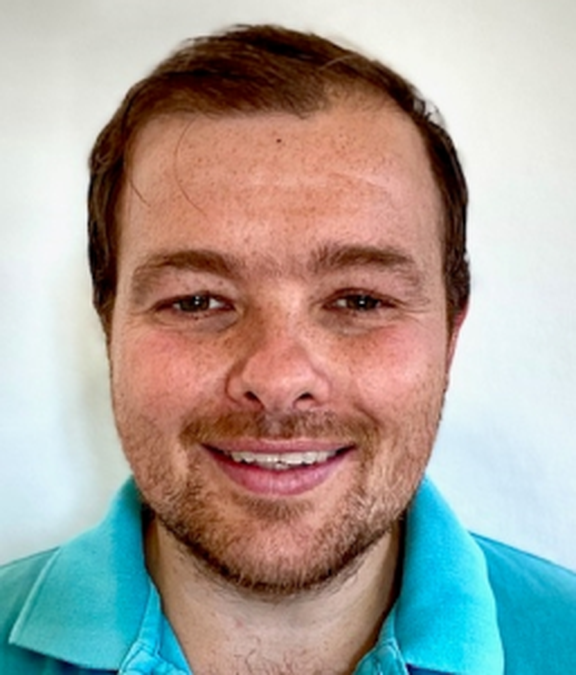Lawley Justin
Name: Univ.-Prof. Justin Lawley, PhD
Email: Justin.Lawley@uibk.ac.at
Phone number: +43 512 507 45896
Office location: PT-006 (Pulverturm)
Tutorial hours: To book an appointment please use the link: https://calendly.com/lawley-tutorial/15min
Tuesday and Wednesday 11:00 a.m. to 12:00 p.m.
Address: Fürstenweg 189, 6020, Innsbruck
ORCID ID: https://orcid.org/0000-0003-2166-7966
Research area: Physiology of performance and prevention
Justin Lawley, born 1983 in North Wales, studied sports science and outdoor activities at the School of Sport, Health and Exercise Sciences at Bangor University. He then continued his doctoral studies in a successful collaboration between the School of Sport, Health and Exercise Sciences and School of Psychology at Bangor University. His research focused on how low oxygen effects the human brain. Professor Lawley then moved to the United States, where he completed his postdoctoral training under the mentorship of Professor Benjamin Levine at the Institute for Exercise and Environmental Medicine in Dallas. During this time, Professor Lawley worked with his closest colleagues Dr. Erin Howden, Professor Satyam Sarma and Professor William Cornwell on some of the most challenging studies in exercise cardiology and gravitational physiology. He has received grants from agencies such as the National Space Biomedical Research Institute (NSBRI) in collaboration with the National Aeronautics and Space Administration (NASA), the Partnership for Clean Competition (PCC), the Wilderness Medical Society (WM), and Austrian Agency for International Cooperation in Education and Research (OeAD-GmbH). He has been awarded numerous national sponsorship prizes including winner of the early investigator prize by the journal of physiology, and has given numerous lectures at national and international conferences, advisory boards and specialist seminars.
Cardiovascular and exercise physiology.
Prof. Lawley's research interests explores how maintaining a physically active lifestyle benefits human health (exercise is medicine). Specifically, my group is interested in how starting and/or maintaining a new exercise regime, or lifelong committed exercise, benefits the function of blood vessels, the heart, and the brain.
Environmental physiology.
Prof. Lawley's group is also interested in several aspects of environmental physiology. For example: 1) identifying risks associated with travelling to, and exercising at, high altitude with preexisting medical conditions, 2) examining the pathophysiology of high altitude disorders (acute mountain sickness & high altitude cerebral edema), 3) exploring the interactive effects of hypoxia and cold environments on thermal balance and the risk of cold injury or hypothermia, 4) exploring the pathological impact of chronic mountain sickness, which is characterized by polycythemia. 5) Physiological impact of apnea diving including competition divers and spear-fishermen. 6) investigating the effect of deconditioning (space flight / bedrest) on blood vessel, heart and brain function and developing effective countermeasures, 7) Identifying the interaction of deconditioning and hypoxia as it relates to space flight extravehicular atmospheric conditions of 8.2 psia and 34% O2.
Teaching (ongoing):
- VO Herzkreislauf, Atmung
- VO Spezifische Aspekte der Leistungsphysiologie
- VO Ernährung im Sport
- VU Präsentieren von Forschungsergebnissen
- VU Wissenschaftliches Publizieren
- VO Aktuelle Forschung in der Trainingswissenschaft
- SE Problemanalyse und Forschung im Gesundheitssport
- SE Problemanalyse und Forschung in der Trainingswissenschaft
- SE Diskussion der Ergebnisse
Lawley_publication_list_pubmed
Highlighted publications:
Cardiovascular & Exercise physiology.
Hansen et al., Mechanisms of sympathetic restraint in human skeletal muscle during exercise: role of α-adrenergic and nonadrenergic mechanisms. (2020) Am J Physiol Heart Circ Physiol.
Sarma et al., Mechanisms of Chronotropic Incompetence in Heart Failure with Preserved Ejection Fraction. (2020) Circulation heart failure.
Lawley et al., Safety, hemodynamic effects and detection of acute xenon inhalation: Rationale for banning xenon from sport. (2019) J Appl Physiol https://www.ncbi.nlm.nih.gov/pubmed/31414955
Katrin et al., Effect of Acute and Chronic Xenon Supplementation on Erythropoietin, Hematological Parameters, and Athletic Performance. (2019) J Appl Physiol
Howden et al., Reversing the Cardiac Effects of Sedentary Aging in Middle Age, A Randomized Controlled Trial: Implications for Heart failure Prevention Circulation (2018). https://www.ncbi.nlm.nih.gov/pubmed/29311053
Howden, Lawley et al., [Invited Review] Potential role of endurance training in altering renal sympathetic nerve activity in chronic kidney disease Auton Neurosci (2017) https://www.ncbi.nlm.nih.gov/pubmed/27908698
Howden et al., Integrative blood pressure response to upright tilt post renal denervation. Hypertension (2017) https://www.ncbi.nlm.nih.gov/pubmed/28338768
Cornwell III et al., Restoration of pulsatile flow reduces sympathetic nerve activity among individuals with continuous-flow left ventricular assist devices Circulation ( 2015). http://www.ncbi.nlm.nih.gov/pubmed/26510698
Hieda M et al., Pre-load Corrected Dynamic Starling Mechanism in Patients with Heart Failure with Preserved Ejection Fraction J Appl Physiol (2018) https://www.ncbi.nlm.nih.gov/pubmed/29051333
Environmental physiology.
Mugele et al., [Invited Review] Integrative crosstalk between hypoxia and the cold: Old data and new opportunities. (2020) Exp Physiol.
Tymko et al., Global Reach 2018: Heightened α-Adrenergic Signaling Impairs Endothelial Function During Chronic Exposure to Hypobaric Hypoxia. (2020) Circ Res.
Simpson et al., Sympathetic neural activation in humans: a potential role for pulmonary arterial baroreceptors (2020) J Physiol.
Petersen, Lawley, et al., Lower body negative pressure to safely reduce intracranial pressure (2019) J Physiol. https://www.ncbi.nlm.nih.gov/pubmed/29311053
Lawley et al., Effect of gravity and microgravity on intracranial pressure. J Physiol (2017) https://www.ncbi.nlm.nih.gov/pubmed/28092926
Lawley et al., [Invited Review] Cerebral spinal fluid dynamics: Effect of hypoxia and implications for altitude illness J Appl Physiol (2016). http://www.ncbi.nlm.nih.gov/pubmed/26494441
Lawley et al., Unexpected reductions in regional cerebral perfusion during prolonged hypoxia J Physiol (2017). http://www.ncbi.nlm.nih.gov/pubmed/27506309
Lawley et al., Normobaric hypoxia and symptoms of acute mountain sickness: Elevated brain volume and intracranial hypertension Ann Neurol (2014). http://www.ncbi.nlm.nih.gov/pubmed/24788400

